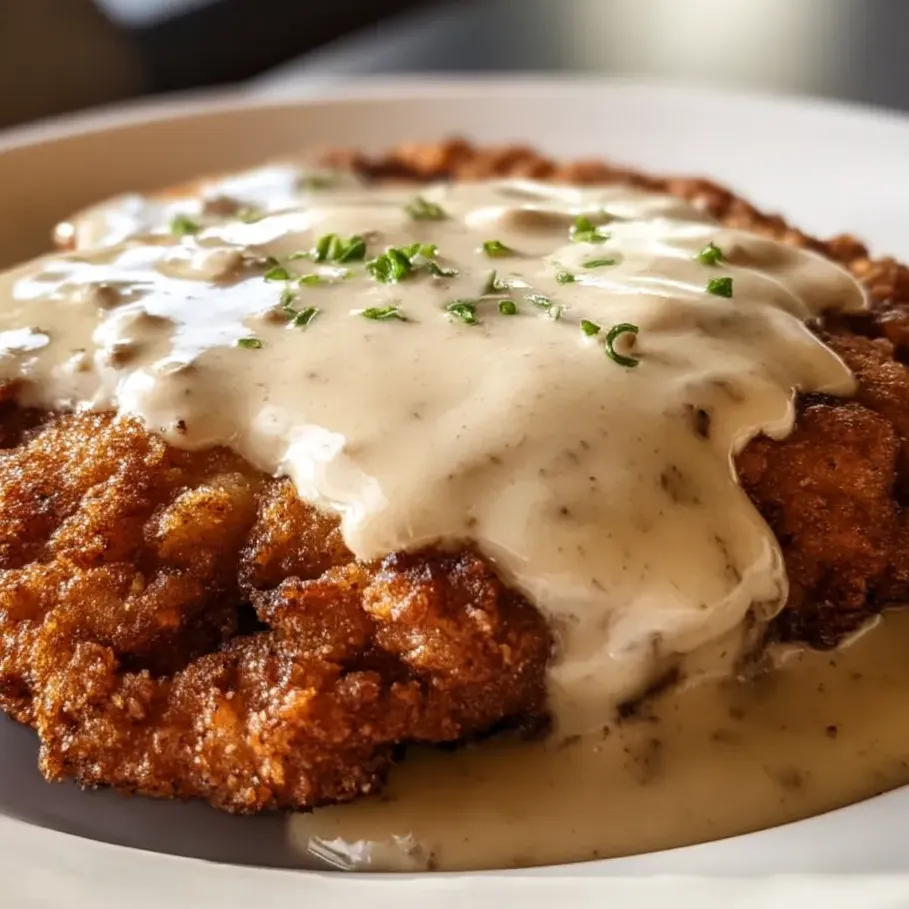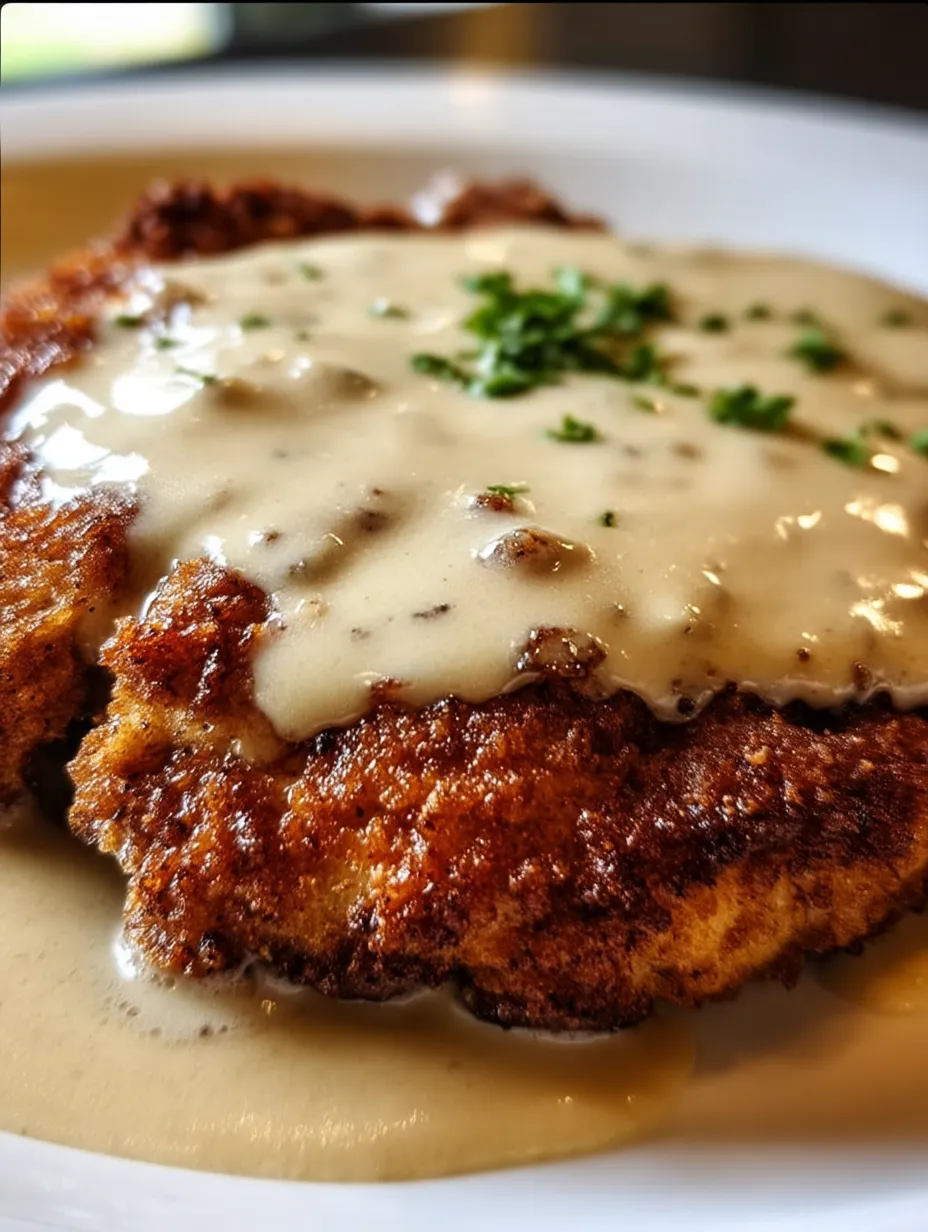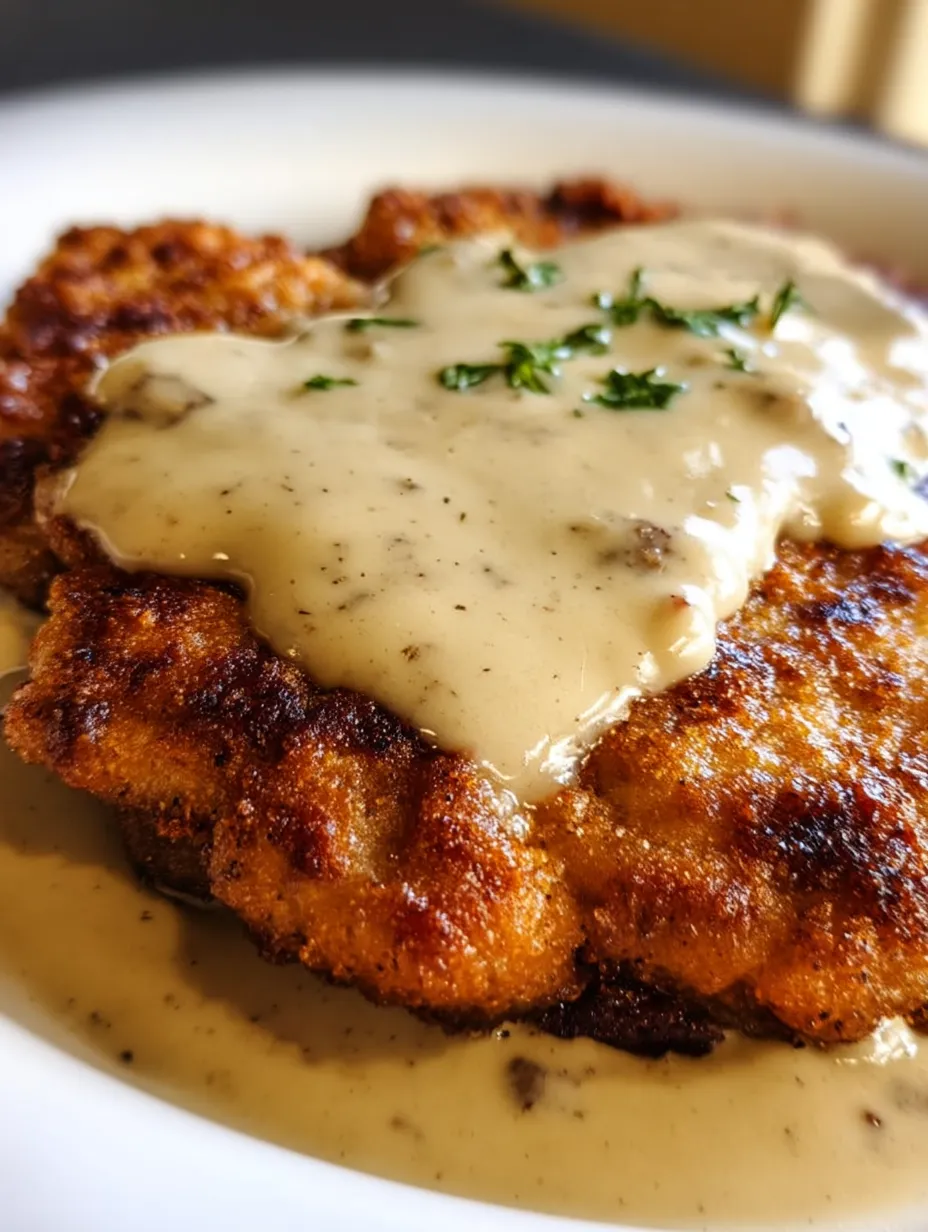 Pin it
Pin it
Nothing beats this country-style chicken fried steak with its super crunchy outer layer and smooth, silky gravy. The method gives you that authentic down-home crunch around soft beef, all covered in a thick, homemade sauce that ties everything into one amazing dish.
I whipped up this chicken fried steak during a freezing spell when we needed something truly warming. That first crunch when the fork hit the crispy coating instantly made us feel like we were at our favorite roadside eatery, and it's been our weekend treat we can't wait for ever since.
Ingredients
- Round steak or cube steaks: Thin-pounded cuts make the perfect base and cut down on your prep work
- Buttermilk bath: Does wonders to soften the tough meat fibers
- Two-step flour coating process: Makes that famous crunchy outside that won't fall off
- Flavor mix: With onion powder, garlic powder, cayenne, and paprika creates deep taste layers
- Skillet drippings for sauce: Grabs all those tasty browned pieces for maximum flavor
How To Make It
- Soak Your Steaks:
- Put your meat in buttermilk for at least half an hour up to two hours in the fridge. This sour bath softens the meat and helps your coating stick better. The more time you give it, the more tender your steaks will turn out.
- Set Up Your Coating Area:
- Make your breading station using three different dishes. The first plain flour works as a foundation that helps everything stick. The whisked eggs add moisture that wakes up the flour's stickiness. The last layer of seasoned flour brings that signature taste and crunch.
- Coat The Meat:
- Take steaks out of the buttermilk, let extra liquid drip off completely so your coating won't get soggy. Move carefully through all three stations, gently pushing the final seasoned flour onto every part of the meat surface.
- Fry Them Right:
- Get your oil to just the right heat before adding the meat. If it's too cold, they'll soak up grease; too hot, and the outside burns while the inside stays raw. Dip a wooden spoon in - tiny bubbles mean it's ready. Cook until deep golden brown, about 3-4 minutes on each side, changing heat as needed.
- Whip Up That Gravy:
- This flour-based gravy starts with all those tasty pan bits. Cook flour into the fat until it smells a bit nutty, then slowly pour in milk while stirring non-stop to avoid lumps. Keep it gently bubbling until it gets as thick as you want, knowing it'll thicken more as it cools.
 Pin it
Pin it
The real magic in this dish comes from those dark flecks left in the pan after cooking. My grandma used to call it "brown gold" and never let any go to waste, sometimes cooking extra gravy just so we'd have some for toast at breakfast the next day.
Storage and Reheating
Though this dish tastes best straight from the pan, you can keep leftovers in the fridge for up to 3 days. Keep the gravy in a separate closed container. To warm up, put the steaks on a baking tray in a 350°F oven for around 10 minutes until hot all the way through. You can warm the gravy slowly on the stove, adding a splash of milk to thin it out if it got too thick while sitting.
Common Substitutions
If cube steak isn't available, any tough meat like round steak works great when you pound it thin with a mallet. Don't have buttermilk? Mix regular milk with a spoon of lemon juice or vinegar and let it sit for 10 minutes. If you can't do dairy, plain almond milk works surprisingly well for both soaking and gravy, though it might not be quite as rich.
Serving Suggestions
The classic sides are fluffy mashed potatoes that soak up extra gravy, with buttery corn or green beans for color and crunch. For a full Southern meal, add some cooked collard greens and warm, fresh biscuits. A tall glass of sweet tea rounds out this filling dinner that hits the spot like nothing else can.
 Pin it
Pin it
Frequently Asked Questions
- → Can I swap buttermilk for regular milk?
Absolutely! You can mix 1 cup of milk with a tablespoon of vinegar, and wait 5-10 minutes. This simple trick mimics the acidity of buttermilk for tenderizing the steak.
- → What type of beef works best?
Cube steak is ideal, as it's pre-tenderized. Round steak that's been pounded thin will also work. It's crucial to use a thin cut of meat that's been softened to break up any tough fibers.
- → Why is it named chicken fried steak?
The name reflects the cooking style, not the ingredients. It’s referred to as "chicken fried" because of the similarities in how the steak is breaded and pan-fried, much like Southern-style fried chicken.
- → How hot should the oil be for frying?
Maintain the oil between 175-190°C (350-375°F). No thermometer? Try dropping in some flour; if it sizzles gently without burning, you're good. Or place a wooden spoon tip in; bubbles should form around the edges.
- → How do I keep the gravy smooth?
To avoid lumps, pour the milk into the roux very gradually while whisking non-stop. If lumps form, whisk vigorously or strain the gravy with a fine-mesh sieve.
- → What sides go best with this dish?
Mashed potatoes, collard greens, corn, or green beans all complement well. Don't forget to spoon gravy over everything. Buttermilk biscuits are also a fantastic choice to soak up every drop.
